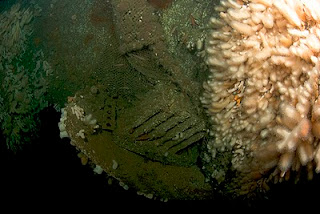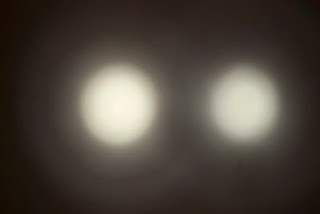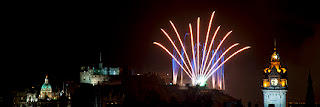Suunto D9tx
The Suunto D9tx Is the new top of the range watch style dive computer from Suunto. It brings together the technology from its predecessor the Suunto D9 and the trimix algorithms of the Suunto HelO2 dive computers and puts it into an upgraded package that considerably improves on both the D9 and the HelO2. I have previously owned a Suunto D9 and I currently use and hold in high regard the Suunto HelO2. I am therefore well placed to look and see how the new D9tx compares.
In 2008 I reviewed the Suunto HelO2 and you can find my report here
http://mikeclarkdiveblog.blogspot.com/2009/11/suunto-helo2-review.html If you read this it will go into depth re trimix and how the computer works. The D9tx works in an identical fashion re the trimix algorithms, so to discuss it again would just be to repeat myself. That said I will cover key features and upgrades in this review.
Three years ago when I reviewed the HelO2 I missed the inbuilt compass available with other Suunto models. Suunto advised me that at that time it was just not possible to fit the compass into the HelO2. Those 3 years have seen technology move on and now the compass along with the trimix algorithms are included in the Suunto D9tx. This is amazing in its own right, for all this technology to be encased in a computer not much bigger than a standard dive watch.
D9tx V HelO2
Some divers like the watch style computer and others like the standard size unit and choice will come down to the diver’s preference. I found only 2 things that for me really improved this unit over the HelO2. Firstly as already mentioned the compass is a feature of the D9tx, I am happy to say. Secondly and perhaps more importantly in the Dive Mode menu the D9tx has a “dive air” category as well as mixed gas and gauge mode. The beauty of this is that you can utilise the air dive mode for your air dives, without having to adjust or delete your gas mixes. With the HelO2 you only have mixed gas and gauge options and diving on air requires the user to delete gas mix 1 whatever it may be, say a rich trimix mix and substitute it with 21% O2. This requires discipline from the user. It’s unlikely that a diver would forget to imput their trimix mix into the HelO2. Dives are planned on the pc and the info is transferred from the pc directly to the HelO2 populating the gas fields. If not uploaded directly from a pc the trimix diver will enter their gases into the HelO2 after analysing their gas mixes. The trouble comes when the gas diver dumps his twinset and decides to go for a wee air dive, where potentially half way through the dive they will note the computer is not set up for an air dive at all. The diver if diving purely on air with a HelO2 would have to turn all the travel gases and deco gases stored on the unit to off. (For Info. - Gases have 3 states-primary, Secondary and Off. Full description in my HelO2 report). So the D9tx is much less time consuming and diver friendly for an air diver.
What are the advantages of the HelO2 over the D9tx- well all I can say is the HelO2 has a user replaceable battery and also a larger viewing screen. Both are superb dive computers for open circuit trimix and choice of style is likely to be the deciding factor between the 2 computers.
D9 V D9tx
Firstly the addition of the trimix algorithm makes this a full trimix open circuit dive computer. I found the D9tx easy to use and read. (The screen is smaller than the HelO2 but it is extremely clear.) It works identically to the HelO2 underwater, Secondly the Compass has been improved to a 3D tilt compensated compass. I found it worked well and was easy to utilise. I found on my test unit that North was a bit off. I checked this against my buddies D9tx and a traditional compass which confirmed my unit was a bit out. Thirdly and this is not a minor point the strap has been changed on the D9tx (Elastomer style). This is far more pliable and therefore comfortable to wear than the D9 strap. Once the test unit arrived it was constantly on my wrist and there were no comfort issues, which was great! I found this a vast improvement. A bracelet style strap is also available. Lastly the bling of the D9 has been toned down and the gun metal titanium casing of the D9tx is a little less in your face but very smart and presentable for daily use.
Other improvements that you may not notice immediately are that the D9tx has new internal electronics that improve memory in relation to information storage and accuracy when compared to the D9. The front glass has also been replaced with sapphire glass which is much more resistant to scratching than standard glass.
Advantages of D9 over D9tx – Nil
Conclusion
In all this is a superb dive computer that has improved on its predecessors. It is diver friendly and easy to use for trimix dives in the UK (Gloves and all). One other thing just in case you are worried about the smaller face of the display. For my diving I found the unit clear and easy to read. Fields such as Gas mix’s and tank pressure have to be accessed by pushing a button to display the desired field (as with the HelO2).
Price for the D9tx is around £900 and the optional integrated gas transmitter is around £200. All Dive Planning software and the PC connection are included in the price of the computer.
Things I didn’t like
Well not much to tell the truth. The compass played up a little but this was confirmed to be the test unit I was using. Otherwise it works beautifully. The thing that concerned me the most was wearing this beautiful piece of kit on your wrist and cursing every time it takes a knock. It’s a very tough little unit but if you want to keep it looking pristine make sure you invest in a screen guard.
Mike Clark












































